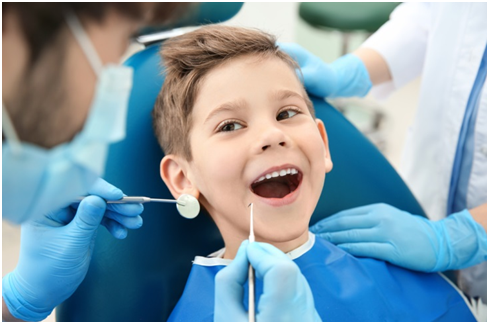Dentistry is a considerably broad discipline in the field of medicine. This area in medicine generally cares for our dental needs or problems. In this light, dentistry specializes in teeth, gum, nerves and jaw medications. On the other hand, a branch of dentistry that deals mainly with correcting unaligned teeth and jaw is orthodontics. Dentists are not necessarily orthodontists as the latter requires extra specialized schooling to acquire a license to practice orthodontics. Orthodontic services are much different from dental services and so, hop in to know why.
Dentists and orthodontists: how do they differ?
The only similarity of their description is that they both treat a multitude of oral problems. They both are doctors and work at a dentist’s office. But the similarity ends there. Orthodontic services will include treatment for misaligned teeth, crowded teeth, overbite, underbite, and other jaw and teeth related problems by applying removable or non-removable appliances in the correction procedure. On the other hand, dentists are responsible for treating tooth decay, and gum diseases. They also are accountable for services like root canal implantation, tooth extraction, gap filling, crown removals, and whitening teeth.
What my orthodontist exactly can do?
Your orthodontist, as mentioned, is responsible for realignment procedures. They help most often than not with crooked teeth problems. Overbites and underbites are also best treated by orthodontists. When you are scheduled with your orthodontist, the first thing they will do is to examine the very surface of your teeth. An X-ray sample of your jaw or picture of your mouth may be taken for the exam. The X-ray samples will help the doctor in determining whether your teeth are positioned well or not, if you have a periodontal case, and if you have a tooth that hasn’t come out yet. After which, a gooey material will be placed on your mouth. A mold then will be made which is quite a perfect model of the shape of your teeth. The doctor will examine the replica, and once they recognize what the problem is, they will offer you with suggestions for correction. Approaches may vary depending on the condition you have.
Appliances
Permanent and removable appliances are applied to correct misalignments. Using braces is the most common approach as oral conditions treated by it are more prevalent. It works primarily by putting a constant gentle pressure to the teeth and eventually, realigning them. The doctor may also suggest that one or more tooth be removed for a crowded set. Jaw repositioning is also offered. The gadgets used for such case are called jaw repositioning appliances (sounds fair). Either way, they will be placed on the top or bottom of the jaw to position the jawbone in a more comfortable posture. A headgear is another kind of a removable device. With it on, it slows down the growth of the upper jaw and the pulls the front teeth backward. The device is worn with a band fastened around the rear of the head and is connected to a metal wire in the front.
Oral hygiene is very crucial for the overall fitness of a person. So make sure you schedule regular trips to your orthodontist (or dentist) to ensure that dental problems are kept at bay.


